11 Edible Ground Cover Plants for Backyards and Gardens
Ground cover plants can replace grass lawns with edible alternatives.
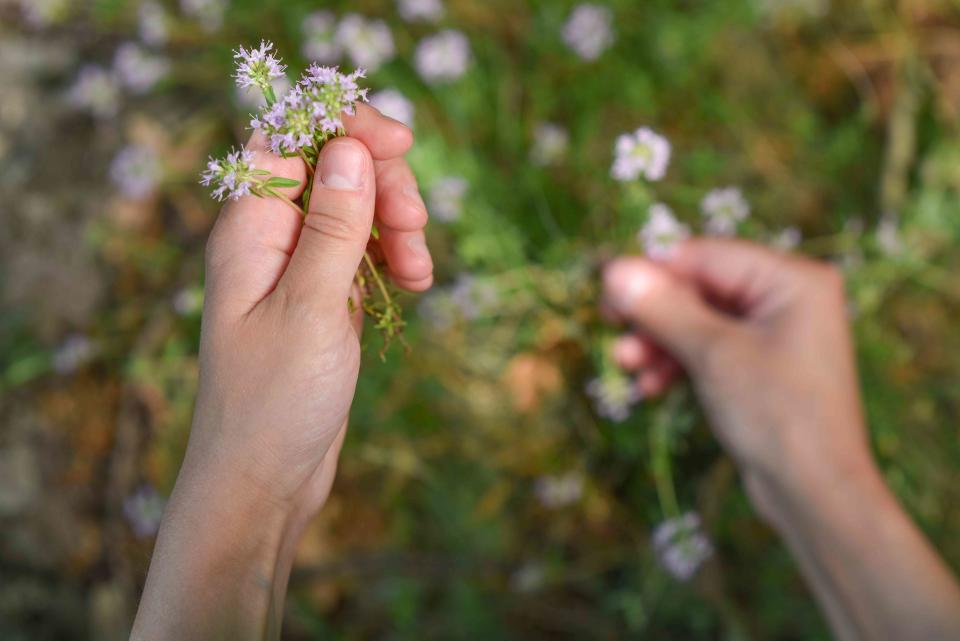
A sprawling, green lawn might be a suburban landscaping classic, but there are other ways to landscape your yard. Phase out a grass lawn by adopting ground cover plants instead, and you can conserve water, spend less time behind a mower, and attract vital pollinators to your backyard. Plus, many of these hardy low-lying plants are edible, native species that will spruce up not just your backyard but your kitchen as well.
From creeping herbs to wild berries, here are 11 edible ground cover plants that can revitalize your backyard.
Some of the plants on this list are toxic to pets. For more information about the safety of specific plants, consult the ASPCA's searchable database.
Spearmint (Mentha spicata)
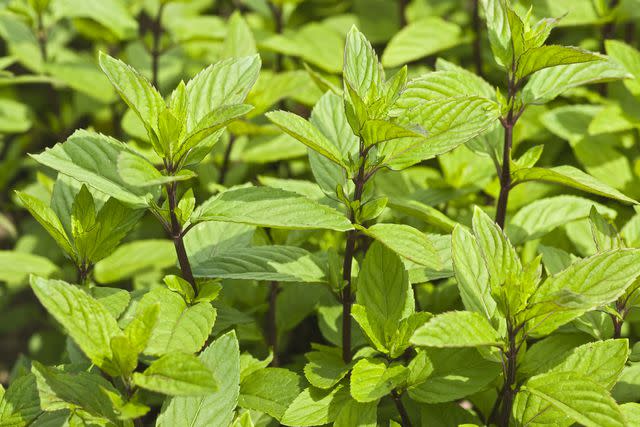
Mark Turner / Getty Images
Spearmint is a hardy, fast-growing perennial herb that reaches one to three feet in height. The leaves are tender and fragrant, with a strong mint flavor that can be used to flavor foods and brew herbal teas. It's a great choice for shady and damp areas of your yard, since it tolerates shade and prefers damp soil. It grows easily, propagates quickly, and likes to spread out, so it's best to grow mint in areas that are hemmed in by pavement or other borders. It can be grown from seed and propagated by cutting or dividing the plants you already have in the ground.
USDA Growing Zones: 3-9
Sun Exposure: Full sun to partial shade
Soil Needs: Acidic, moist, deep, well-drained soils; prefers high organic content
Creeping Thyme (Thymus praecox)
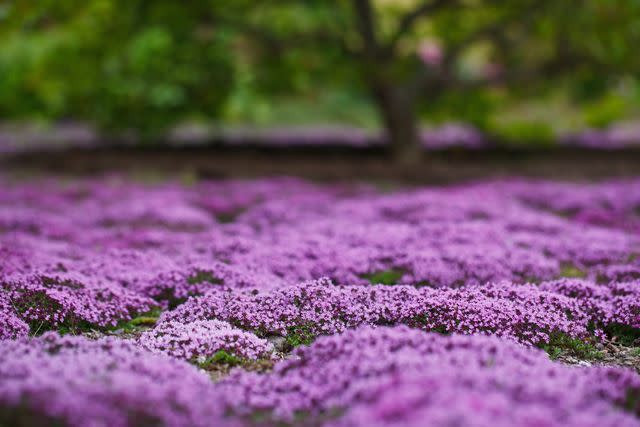
Laszlo Podor / Getty Images
Creeping thyme is a perennial species of thyme that grows horizontally rather than vertically, and forms a matlike ground cover two to three inches tall and up to 24 inches across. Although the thyme that's grown commercially as an herb is a different species, creeping thyme is also aromatic and edible. It's a hardy plant that can stand some foot traffic, making it an excellent choice near pathways and between rock steps. Thyme can be propagated through cuttings or dividing established plants.
USDA Growing Zones: 4-9
Sun Exposure: Full sun
Soil Needs: Prefers rich, somewhat dry soil; tolerates most soils if it's not overwatered
Virginia Strawberry (Fragaria virginiana)
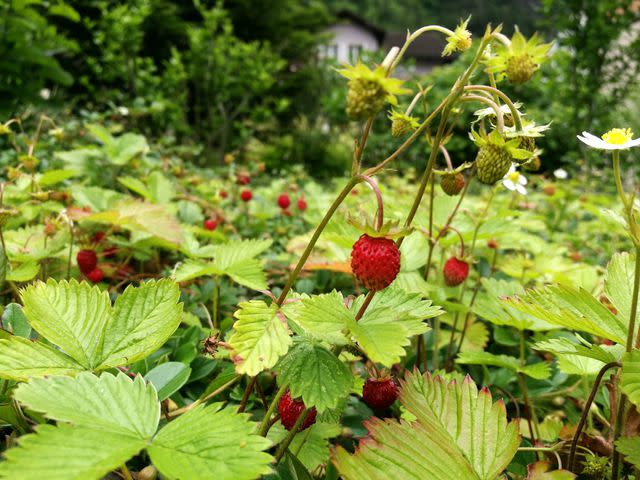
Heltai Gabor / EyeEm / Getty Images
Virginia strawberry is a perennial wild strawberry that is native to eastern North America. It produces white flowers, usually in April or May, followed by small, sweet fruit in June. It grows six inches to one foot in height, can be planted by seed, and spreads easily by runner, propagating on its own throughout the growing season. It's not tolerant of foot traffic, so consider planting it as a border around other areas of a garden.
USDA Growing Zones: 3-8
Sun Exposure: Full sun or partial shade
Soil Needs: Prefers moist, well-drained soil; dry, acidic, sandy soils tolerated
Creeping Rosemary (Salvia rosmarinus 'prostratus')
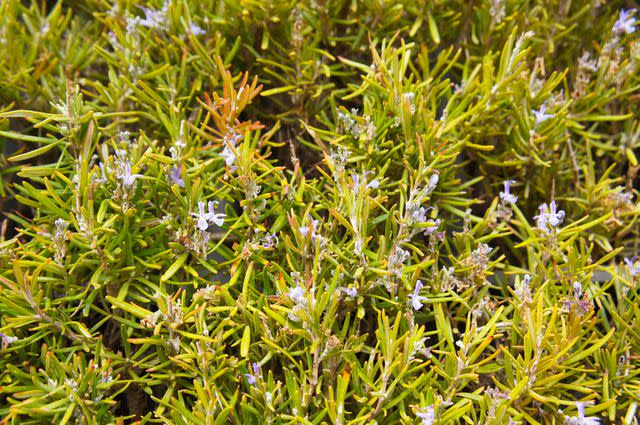
skymoon13 / Getty Images
Creeping rosemary is an evergreen perennial herb that is a horizontally growing subtype of the rosemary species. It grows from two inches to a foot in height, and can spread up to eight feet if left unchecked. Thanks to its Mediterranean origins, it prefers dry climates and is drought tolerant. It's not a great choice for colder climates because it will die off in winter if temperatures fall below 20 degrees on a regular basis. It produces light blue flowers in summer, and is best pruned after the bloom has passed to encourage dense growth.
USDA Growing Zones: 7-10
Sun Exposure: Full sun
Soil Needs: Prefers light, sandy, dry soil; tolerates most that aren't overly moist
American Wintergreen (Gaultheria procumbens)
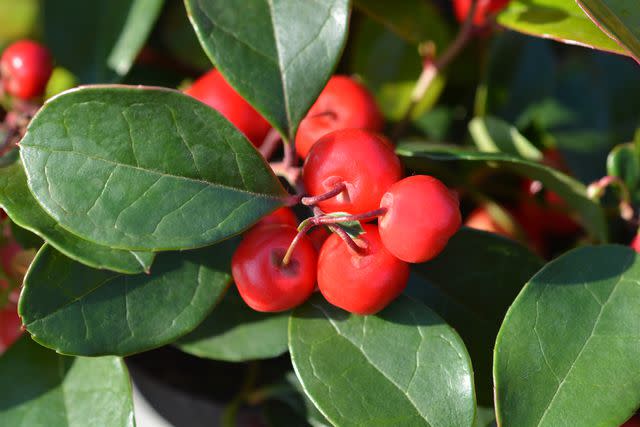
Nahhan / Getty Images
Also known as eastern teaberry or boxberry, wintergreen is a perennial understory plant that does well in shady areas. Its red berries are edible and commonly added raw to salads or cooked in desserts or jams. It has a minty, spicy flavor that some people compare to wintergreen. The plant also produces small, white flowers in summer.
Compared to other ground cover plants, it is slow-growing, and a great choice to plant under trees in dappled light. Wintergreen can be propagated by seed, cuttings, or division of established plantings. Chimpmunks, birds, and deer also use this plant for food.
USDA Growing Zones: 3-7
Sun Exposure: Partial sun or dappled light
Soil Needs: Moist, organically rich soil
Oregano (Origanum vulgare)
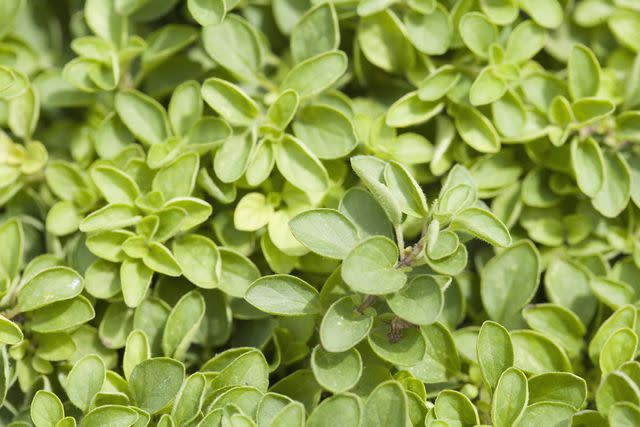
Scientifica / Getty Images
Oregano is a hardy perennial that grows up to two feet tall with leaves that are prized as an herb in Italian cooking. It responds well to being pinched back, which will keep it low to the ground and dense, and it can be harvested quite often for its fragrant leaves, which can also be dried to store for longer periods. It's drought-tolerant, prefers full sun, and relatively dry, well-drained soil. After several years of growth, rosemary becomes woody, at which point it should be replanted, which can be done by seed, cuttings, or division.
USDA Growing Zones: 4-10
Sun Exposure: Full sun or partial shade
Soil Needs: Not overly moist; prefers light, dry, sandy, well-drained soil
Garden Nasturtium (Tropaeolum majus)
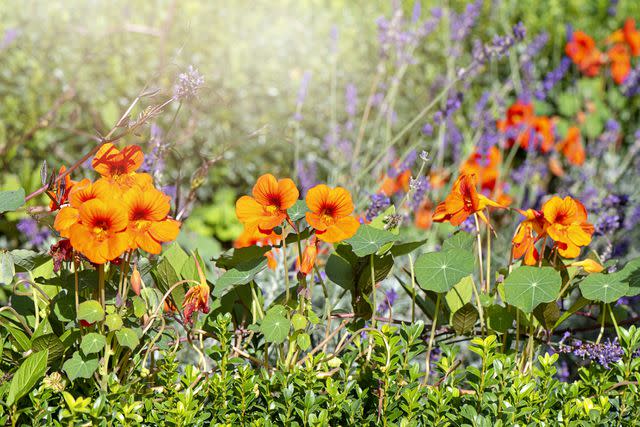
Nasturtiums are best known as a flowering annual plant (perennial in zones 9-11) that is also a useful kitchen herb and ground cover plant that grows in long "trails" and can help repel pests in your garden. Its leaves have a peppery flavor similar to watercress, and its showy flowers can be pickled or eaten fresh. Its flowers grow throughout the summer, and its leaves have a unique shape reminiscent of water lilies. It is best grown from seed and does not transplant successfully.
USDA Growing Zones: 2-11
Sun Exposure: Full sun, or, preferably, partial shade
Soil Needs: Grows best in poor soil with good drainage; not overly dry, moist, or fertile
French Sorrel (Rumex scutatus)
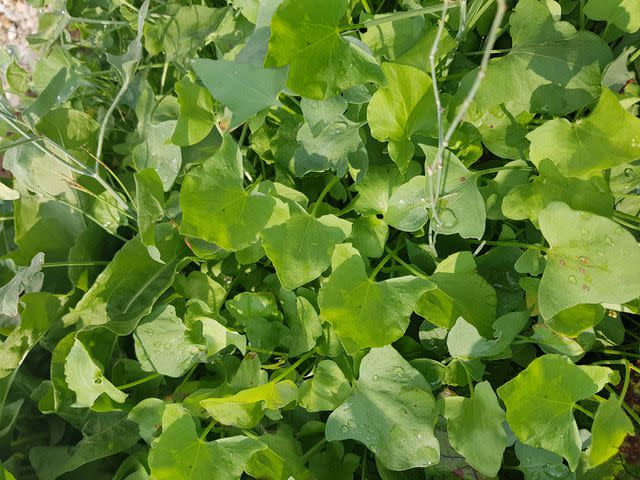
emer1940 / Getty Images
French sorrel is a low-lying, mound-shaped perennial herb that grows six to 12 inches high. Its leaves have an acidic, lemony flavor and can be harvested and used in salads and soups. It grows best in spring and fall, and will bolt in the heat of summer. It's important to distinguish between French sorrel and common sorrel (Rumex acetosa), which will sometimes be marketed under one name, even though they are separate species. True French sorrel has a more pleasant, milder flavor.
USDA Growing Zones: 3-7
Sun Exposure: Full sun
Soil Needs: Prefers slightly acidic, rich, well-drained soil
Acorn Squash (Cucurbita pepo var. turbinata)
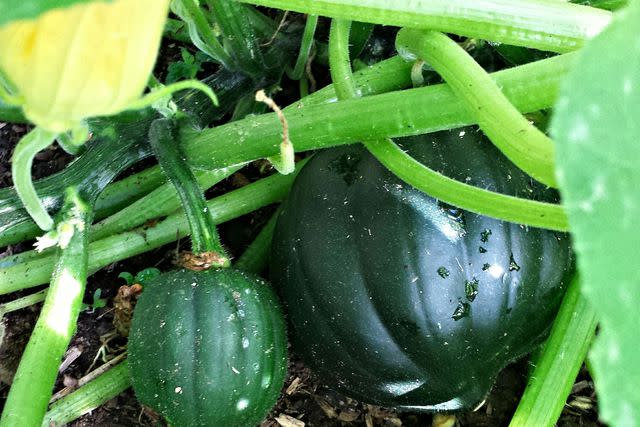
Terri Ham / EyeEm / Getty Images
If you're looking for a sprawling ground cover plant to occupy some serious real estate, look no further than the acorn squash, a species of perennial winter squash. Despite the name, it grows in warm weather—winter squash are distinguished from summer squash by their hard skin, which protects the fruit and allows it to be stored over winter. Unlike the herbs on this list, acorn squash has a defined growing period of 80 to 100 days, and it is usually harvested in September or October.
USDA Growing Zones: 2-11.
Sun Exposure: Full sun.
Soil Needs: Prefers rich, well-drained, slightly acidic soil.
Ramps (Allium tricoccum)
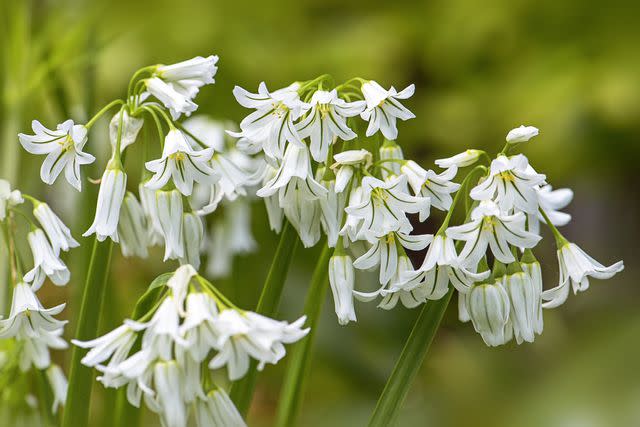
Jacky Parker Photography / Getty Images
Ramps, or wild leeks, are a perennial plant native to North America that's both a wildflower and a wild food. They have a distinctive aroma and a similar taste to sweet spring onions, and can feature in a variety of recipes. Their native habitat is the moist, rich understory of the Appalachian woodlands, and they'll grow best in areas of your yard that mimic that fertile environment. They thrive in wet spring weather, will grow eight to 12 inches in height, and will produce white flowers in early summer.
USDA Growing Zones: 3-7
Sun Exposure: Partial sun
Soil Needs: Well-drained, acidic, loamy, calcium-rich soil
Purslane (Portulaca oleraca)
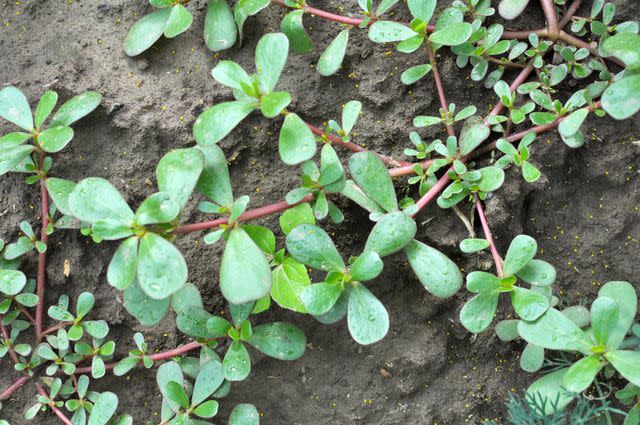
Orest Lyzhechka / Getty
While some people consider purslane an invasive weed, it’s actually very nutritious. It’s a source of both protein and omega-3 fatty acids, in addition to other vitamins and minerals. Purslane has a lemony, sour taste, and leaves harvested later in the day may have a milder flavor. It can be eaten fresh in salads, chopped and added to vinaigrettes or lightly sautéed and added to stir-fry dishes in the same way you might use bean sprouts. The leaves, stems, seeds, and flowers are all edible. It tolerates a wide range of soils, and tolerates poor soils. Because it grows so vigorously, it should only be grown near more established plants and kept in check, as it can out compete seedlings or escape easily into wild settings.
USDA Growing Zones: 2-11
Sun Exposure: Full sun
Soil Needs: Tolerant of most soil types, best in well-drained fertile soil
Related:16 Edible Weeds: Dandelions, Purslane, and More
To check if a plant is considered invasive in your area, go to the National Invasive Species Information Center or speak with your regional extension office or local gardening center.

